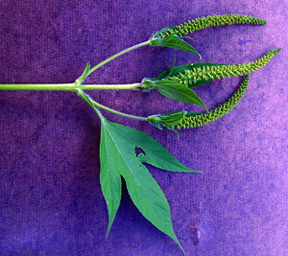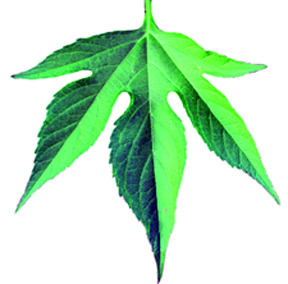Scouting for weeds: Giant ragweed
Editor’s note: This article is from the archives of the MSU Crop Advisory Team Alerts. Check the label of any pesticide referenced to ensure your use is included.
Giant ragweed (Ambrosia trifida L.)
Life cycle
Erect, branching summer annual.
Leaves
Cotyledons are thick and oval to spatula-shaped and differ from those of common ragweed by being three to four times larger. Initial leaves are entire; successive leaves have three to five lobes and leaves are opposite in arrangement. Leaves are hairy and rough.
Stems
Usually hairy and rough to touch, erect and branched and up to 15 feet in height.
Flowers and fruit
Flowers are generally inconspicuous, found on terminal branches. They produce prolific amounts of pollen. The seed is enclosed in a single-seeded, woody fruit with five spikes encircling a long point, resembling a crown. Seeds are found in the axils of the upper leaves.
Reproduction
Seeds.
Editor’s note: This and more weed identification information is available in the field guide An IPM Pocket Guide for Weed Identification in Field Crops. To order, call 517-353-6740.



 Print
Print Email
Email




